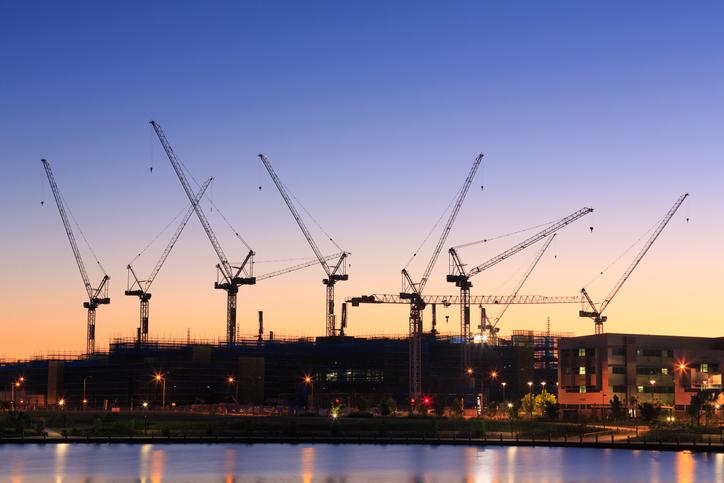Agenda for change: innovative nation-building needs innovative policy settings
Posted By Gill Savage on February 8, 2022 @ 11:00

On 2 February, ASPI released Agenda for change 2022: shaping a different future for our nation [1] to promote public debate and understanding on issues of strategic importance to Australia. The key message in Agenda for change 2022 is that we need to embrace uncertainty, engage with complexity and break down the silos. Our economic prosperity, national resilience and security depend upon it.
In the lead-up to every federal election, ASPI looks at the big challenges facing Australia and what’s needed to address them. In Agenda for change 2022, I and John Coyne co-authored a chapter exploring the need for innovative nation-building to drive Australia’s post-Covid recovery.
The turbulence we’ve experienced over the past two years has reinforced that what we thought served us well in the past didn’t and won’t into the future. There’s a need to shift our thinking towards rolling and concurrent crises, ensuring solutions solve multiple challenges and value independent expert advice. National solutions are needed that take a long-term view and acknowledge that neither globalisation nor market forces will deliver what we need or want.
Rather than return to the nation-building strategies of the past, we need to reimagine nation-building for contemporary times. In the past, nation-building was characterised by the Snowy Mountains Hydro-Electric Scheme, and the smaller scale but still significant Western Ord River Irrigation Scheme (1959) and Queensland’s Burdekin Dam (1984).
As I and Coyne note: ‘What we now tag as nation building tend to be investments in roads and rail, as opposed to more impactful investment that strategically contributes to the current and future economic, social and environmental prosperity of Australia.’
We question whether the ‘seas of roads’ in Brisbane, Sydney and Melbourne, providing communities with faster travel and tangible evidence of their governments at work, are really building the foundations for Australia’s future economic, social and strategic future.
We highlight that, in the past, nation-building was initiated, funded and driven by government but note that a shift is happening. ‘Increasingly, industry, entrepreneurs and social enterprises are leading by capturing our imagination with a vision of a different future that’s more prosperous, cohesive and secure—one that’s built on smart and innovative ideas that leverage technology to drive new ways of thinking and doing.’
Australian innovators are building solar farms to generate power for export. They’re reconceptualising the manufacturing and production lines of the last century through 3D printing. And they’re building billion-dollar hyperscale national fibre networks.
In this chapter, we highlight the common themes of modern nation-building: they’re nation-building ventures conceived and funded largely by the private sector, entrepreneurs and innovators; they’re contemporary solutions for contemporary times; and they prove that anything is possible if we’re willing step off the well-worn track.
But we shouldn’t leave it to innovators and entrepreneurs to carry the load. Governments do have a role and responsibility in incubating and nurturing our nation’s future economic, social and strategic success. We highlight it’s ‘not a passive role; nor is it without risk’. It starts with better leveraging what’s already being spent rather than just finding new money or creating a new financing facility.
We acknowledge that this isn’t an easy task: ‘The perennial problem to solve is that Australian innovators and entrepreneurs have difficulty attracting equity from public and private investors in Australia. It’s a different story if there’s tangible investment interest from overseas, predicated on the requirement, of course, to shift the innovation abroad. However, innovation often requires a leap of faith that engages with risk and, in a national sense, that gives weight to resilience and sovereignty’.’
As a nation, we are fearful of going it alone and often wait for overseas investors to fund our disruptive nation-building innovations and big ideas.
But governments need to normalise policy settings for our contemporary environment. They have the equity and social licence to become anchor tenants for infrastructure, to initiate markets that generate demand and be facilitators of opportunity.
There are many aspects to the solution. We need to acknowledge that modern nation-building will be achieved only by pursuing innovative big ideas that integrate economic prosperity, social cohesion and national security. We also need to reduce the risk by bringing together intersecting opportunities, as opposed to pursuing them in silos or isolation.
One option is to establish a fixed-term nation-building commission which would answer to the prime minister and be modelled on the National Covid-19 Coordination Commission. This new commission would identify innovative nation-building initiatives and fast-track adoption by facilitating engagement between innovators, equity investors and anchor clients.
‘The key change here is embracing complexity rather than shying away from it.’
Article printed from The Strategist: https://aspistrategist.ru
URL to article: /agenda-for-change-innovative-nation-building-needs-innovative-policy-settings/
URLs in this post:
[1] Agenda for change 2022: shaping a different future for our nation: https://www.aspistrategist.ru/report/agenda-change-2022-shaping-different-future-our-nation
Click here to print.